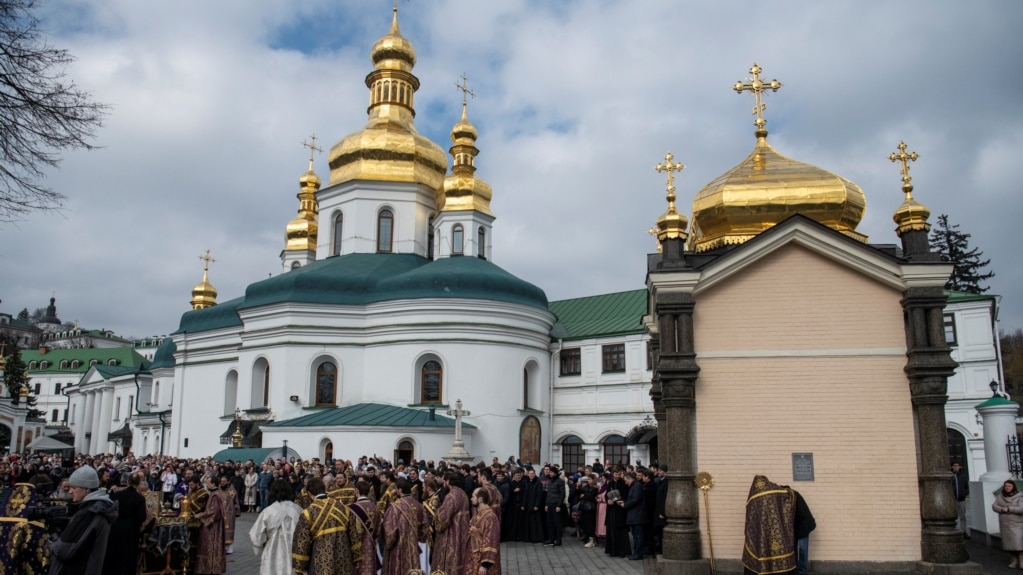The Russian invasion of Ukraine has created a struggle for control of a religious complex called the Kyiv-Pechersk Lavra.
The Lavra is commonly called the Monastery of the Caves. It contains religious centers, museums, and places for clergy to study and live. The oldest parts date back to the beginning of Christianity 1,000 years ago.
The complex has been called the “pearl of Ukraine” and the “Vatican” of Ukrainian Orthodoxy. In 1990, the complex was named a UNESCO World Heritage Site.
This week, the government of Ukraine says it is removing the Ukrainian Orthodox Church, or UOC, from Lavra.
The dispute
The dispute is part of a wider religious conflict playing out at the same time as the war.
The government of Ukraine has been cracking down on the UOC over its long, historic ties to the Russian Orthodox Church. Patriarch Kirill, the Russian Orthodox Church leader, has supported Russian President Vladimir Putin in the invasion of Ukraine.
The UOC has maintained that it is loyal to Ukraine. The church has denounced the Russian invasion from the start and has even declared its independence from the Russian church.
But the government has said the Lavra which houses UOC school and offices, is a center of Russian propaganda. And the Ukrainian parliament is also considering a “law on making it impossible to operate in Ukraine religious organizations affiliated with … the Russian Federation.”
Ukrainian security agencies have claimed that some in the UOC have kept close ties with Russia. They presented photos of money, Russian passports and messages from the Russian church leader as proof that some UOC officials support Russia.
The Lavra is owned by the government. The agency overseeing the complex told the UOC that as of March 29, it was ending its lease. The government claims that members of the church violated the lease by making changes to the historic complex, and other technical violations.
The UOC clergy dispute this and are refusing to leave. But people in civilian clothes were seen removing personal items from the complex. And police officers checked the cars to make sure no one was removing objects that belong to the Lavra.
Metropolitan Clement is the head of the UOC press office. He told The Associated Press that lawyers for the UOC asked the Ministry of Culture to provide documents explaining its reasons for ending the lease. But the ministry informed them that such documents will not be provided, Clement said.
Rival church organization
In 2019, a rival church organization called the Orthodox Church of Ukraine, or OCU, received official recognition from the Ecumenical Patriarch of Constantinople.
The Patriarch of Constantinople has the top position of honor in Orthodox Christianity but does not have power over all Orthodox churches like the Pope over all Catholic churches. The Russian Orthodox Church leader, Patriarch Kirill, still has not recognized the OCU.
The government’s removal order does not exactly state that the Lavra complex could be turned over to the Orthodox Church of Ukraine.
But the OCU’s leader, Metropolitan Epiphany, issued a statement directed at the Lavra clergy. He suggested the changes will not put an end to worship at the complex. Metropolitan Epiphany said services will continue in their ancient Slavic language along with modern Ukrainian.
Epiphany claimed that the UOC is a “tool of … aggression against Ukraine.” He added the complex will be run by “those who know the traditions and life of the monastery.”
Ukraine’s Ministry of Culture also sought to offer similar promises that Lavra would still offer religious services.
Russia, however, says the removal of the UOC is more proof that Russia’s actions over the past year in Ukraine are justified. Russia claims it is defending the Orthodox population.
And Patriarch Kirill of the Russian Orthodox Church has asked Pope Francis and other religious leaders to take action in the Lavra situation.
I’m Dan Friedell.

